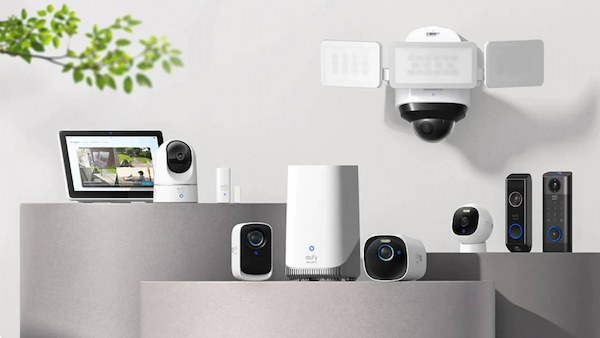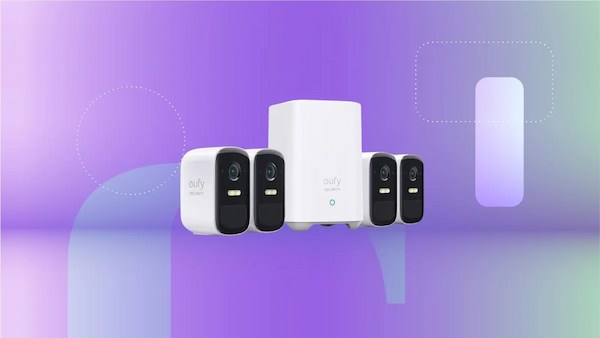In the age of technological advancement, smart homes are becoming increasingly popular. These homes utilize internet-connected devices to enable remote management and automation of household systems, improving convenience and security. This article will explore what a smart home is, the benefits it offers, and provide insights into how to create one.

What is a Smart Home
A smart home is a residence equipped with devices that can be controlled remotely via a smartphone, tablet, or computer. These devices are connected to the internet and can communicate with each other to automate everyday tasks. Common smart home features include lighting control, temperature regulation, security systems, and entertainment management.
Benefits of a Smart Home
Smart homes offer numerous advantages that enhance daily living. Here are seven key benefits of a smart home:
Enhanced Security
Remote Monitoring: Smart security cameras and systems allow you to monitor your home in real-time from anywhere.
Alerts and Notifications: Receive instant alerts on your devices if there is any unusual activity, enhancing home security.
Energy Efficiency
Smart Thermostats: Automatically adjust heating and cooling based on your schedule, saving energy and reducing utility bills.
Lighting Control: Turn lights on and off remotely or set them on a schedule to avoid unnecessary energy use.
Appliance Control: Smart plugs and power strips can turn off appliances when not in use, reducing phantom energy consumption.
Convenience
Voice Control: Use voice commands to control various home devices, making tasks easier and more efficient.
Automation: Set routines for your devices to follow, such as having the lights turn on at sunset or the coffee maker start brewing in the morning.
Remote Access: Control and monitor your home devices from anywhere in the world through your smartphone.
Comfort
Personalized Settings: Adjust lighting, temperature, and music to your preferences with just a few taps.
Remote Control: Manage your home’s environment from anywhere, ensuring comfort upon arrival.
Climate Control: Smart thermostats learn your preferences and adjust the temperature to keep your home comfortable.
Safety
Smart Detectors: Smoke and carbon monoxide detectors send alerts to your phone, providing early warnings of potential hazards.
Automatic Locks: Ensure doors are locked from your smartphone, adding an extra layer of security.
Leak Detectors: Smart leak detectors can alert you to water leaks before they cause significant damage.
Increased Home Value
Attractiveness to Buyers: Smart homes are appealing to tech-savvy buyers, potentially increasing your home’s market value.
Future-Proofing: Investing in smart technology can keep your home up-to-date with future advancements.
Enhanced Functionality: The integration of smart devices can make daily life more convenient and appealing to prospective buyers.
Health Monitoring
Smart Health Devices: Track health metrics and get reminders for medication, supporting overall well-being.
Air Quality Monitors: Ensure the air quality in your home is healthy, reducing allergens and pollutants.
Sleep Trackers: Devices that monitor your sleep patterns can help improve your sleep quality and overall health.
Environmental Impact
Reduced Energy Consumption: By optimizing energy use, smart homes contribute to lower carbon footprints.
Sustainable Living: Integration of renewable energy sources, such as solar panels, can be managed more efficiently with smart home technology.

How to Set Up a Smart Home?
Creating a smart home involves integrating various devices and systems to automate and remotely control functions such as lighting, security, heating, and entertainment. Here’s a concise step-by-step guide to help you set up your smart home effectively.
1.Plan and Choose a Smart Home Ecosystem: Start by identifying what you want to automate in your home, such as lighting, security, or entertainment. Set a budget that includes both the initial setup costs and any potential subscription fees for services. Research different smart home ecosystems like Amazon Alexa, Google Home, and Apple HomeKit, and choose one that fits your preferences and is compatible with your existing devices.
2.Install a Smart Home Hub: A smart home hub acts as the central control unit for your smart devices. Popular options include Amazon Echo, Google Nest Hub, and Apple HomePod. Ensure that the hub you choose is compatible with the devices you plan to add. Once selected, set up the hub by following the manufacturer’s instructions, connecting it to your home Wi-Fi network, and linking it to your smart home ecosystem.
3.Upgrade to Smart Lighting: Replace traditional light bulbs with smart bulbs, such as those from Philips Hue or LIFX, which can be controlled via an app or voice commands. For more comprehensive control, consider installing smart switches that can operate existing light fixtures. These devices allow you to set schedules, adjust brightness, and even change colors to suit different moods and activities.
4.Enhance Security with Smart Locks and Cameras: Install smart locks on your doors for keyless entry and remote access. Brands like August and Schlage offer reliable options. Additionally, set up IP cameras for surveillance, choosing models with features such as motion detection, night vision, and remote access. Popular brands include Arlo and Ring. These security enhancements provide greater peace of mind and control over your home’s safety.
5.Integrate Smart Thermostats and Plugs: Install a smart thermostat, such as Nest or Ecobee, to regulate your home’s temperature efficiently. These devices can learn your schedule and preferences, providing comfort while saving energy. Use smart plugs to control non-smart devices, such as lamps or coffee makers, enabling you to set schedules and operate them remotely. Brands like TP-Link and Wemo offer easy-to-use smart plugs that integrate well with your ecosystem.
6.Create Automation Routines and Ensure Strong Wi-Fi: Use your smart home app to create routines that automate multiple actions. For instance, a “Good Night” routine could turn off lights, lock doors, and adjust the thermostat with a single command. Ensure your home has strong Wi-Fi coverage in all areas where smart devices are installed by using a mesh Wi-Fi system like Google Nest WiFi or Eero. Secure your network with strong passwords and encryption to protect your smart devices from unauthorized access, ensuring a smooth and secure smart home experience.
Conclusion
Smart homes represent the future of residential living, offering unparalleled convenience, security, and efficiency. They are important because they not only make everyday tasks easier but also enhance the safety and value of your home. By integrating smart technology, you can create a more comfortable and efficient living environment that meets your needs. The benefits of a smart home are numerous, making them a wise investment for the future.
FAQ
Are smart home devices energy efficient?
Yes, smart home devices are designed to be energy efficient. Devices like smart thermostats and lighting systems help reduce energy consumption by optimizing usage and eliminating waste.
How to make your house a smart home?
Start by installing smart devices such as thermostats, lighting, and security systems. Ensure they are compatible with a central hub or a smart assistant like Amazon Alexa or Google Assistant for seamless integration and control.
Can a smart home be hacked?
While smart homes can be vulnerable to hacking, you can take steps to protect them. Use strong, unique passwords for all devices, enable two-factor authentication, keep software updated, and use a secure Wi-Fi network to minimize risks.
